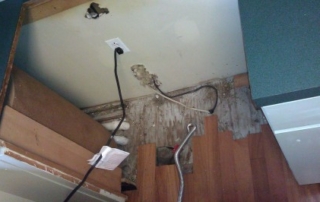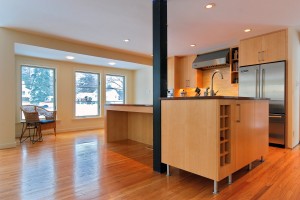A Day in the Life of a Kitchen Remodel — Step 11: Detail, Trim Work, Appliances
Now that the cabinets are installed in our Mt. Airy kitchen, the project is coming to a head. Here is what's happening this week: Installation of extra bits and bobs[...]
Q and A: Checking in With Myers Constructs
As the busy fall home-renovation season kicks off, Myers Constructs co-owner Diane Menke sits down for a chat about breaking traditional design build paradigms, finding paths for growth in a[...]
Saving Old Doors
These doors were first hung on this fine center city row house when Abraham Lincoln was president! The wonderful old masonry in front has been stuccoed over unfortunately,[...]
Examples of Unsafe Renos We See
Many homeowners have no idea that their kitchen or bathroom is a dangerous place — and could even potentially kill them or their loved ones. But we see bad renovations[...]
Home Maintenance Tip: Air Leaks
This is the best time of year to locate air leaks in your older home. You will know you have them if you can feel drafts, or if[...]
Phases of the Typical Home Interior Renovation
Design/Planning Phase – This is an often overlooked, but very important, phase of any home renovation or repair project. Even if your project is as simple as hanging a door[...]
Older Homes – More Energy Efficient Than You Think
Older homes tend to get a bad rap for being energy inefficient. The truth is, many older homes have built-in energy-efficient systems that a homeowner should learn to[...]
When It Comes to Older Homes, Small Is Not the New Big
In the world of new construction, the mantra is “small is the new big.” This means that people who are building new homes appear to be tired of — or[...]
90% Done, 75% to Go!
When it comes to closing a renovation project, that old saying holds true: the devil is in the details. It’s a time when having logged your 10,000 hours counts, and[...]
Trip to Rhinebeck and Learning From The Past
I just returned from a weekend jaunt to Rhinebeck, NY, a charming village located 100 miles north of New York City that was settled by both English and Dutch settlers[...]









